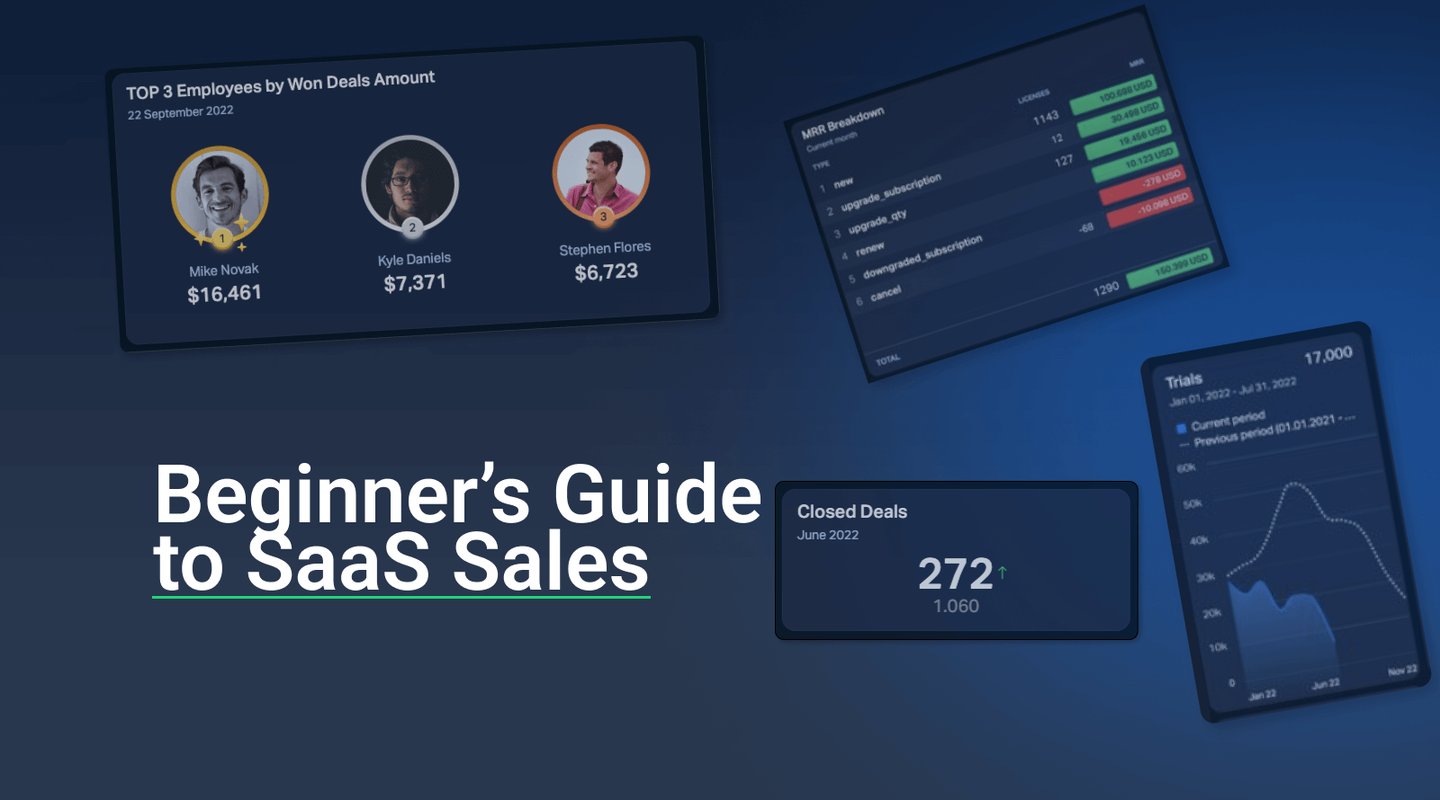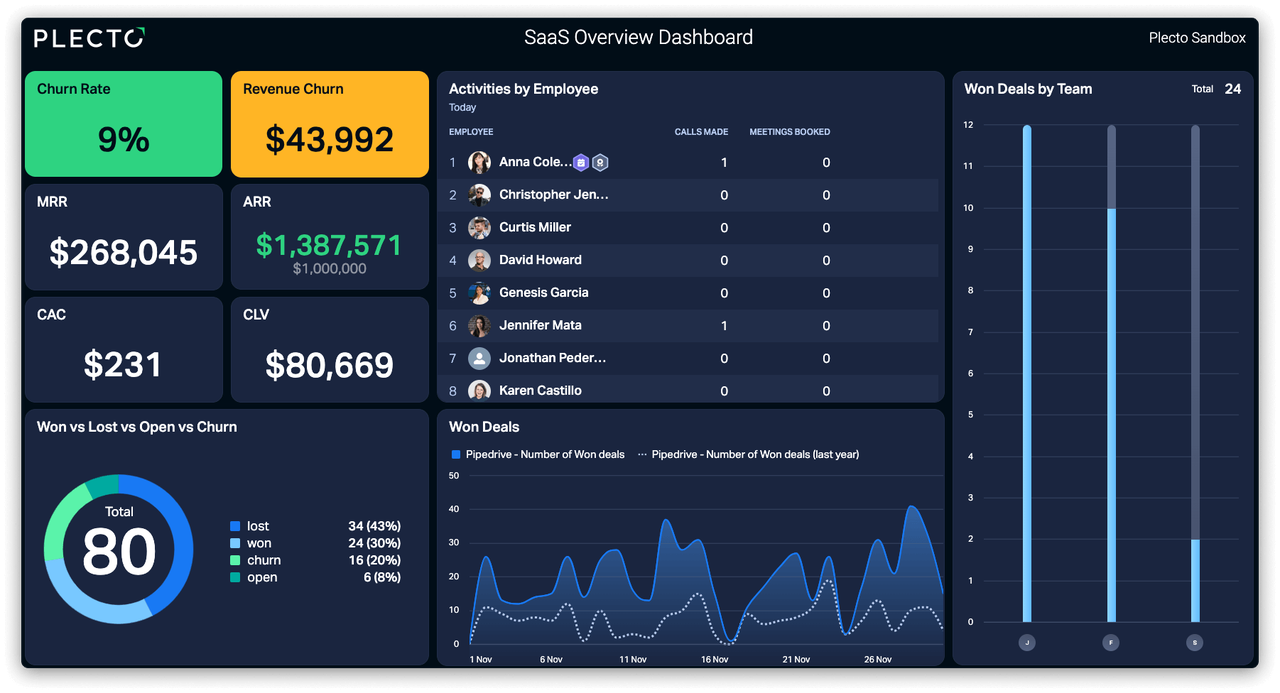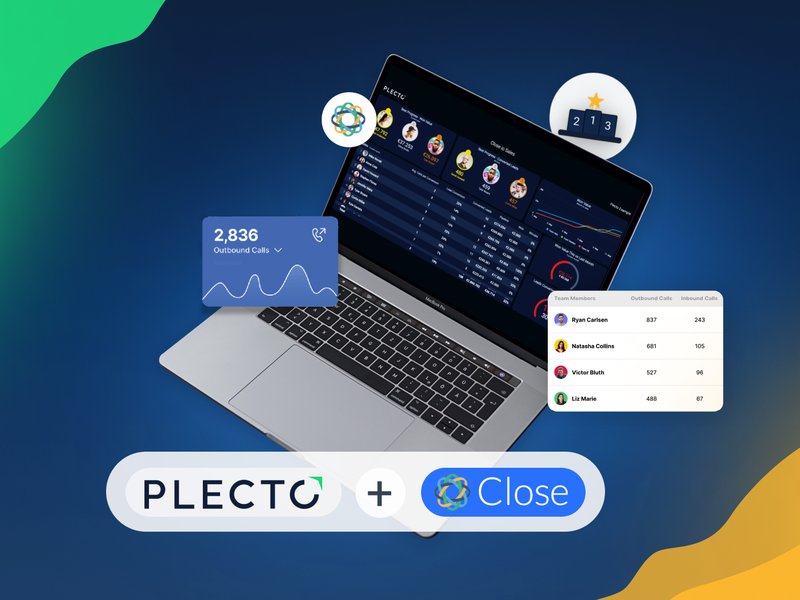If you’re new to SaaS sales, you’ve come to the right place! This guide is a crash course in selling SaaS, and it will get you off to a great start by covering the key points of how to sell software as a service – including ten tips to help you sell like a pro!
What is SaaS and what is SaaS sales?
Before we can answer the question, “What is SaaS sales?” Let’s define what “SaaS” or “software as a service” actually is and how these solutions benefit customers and the companies that provide them.
SaaS software is hosted, accessed, and used online. Its subscription-based business model means lower maintenance costs, better customization, and fewer tech-related headaches for customers – and recurring revenue for the companies that provide it.
Most companies are moving toward SaaS business models. Even in the B2C space, the days of buying a graphics, accounting, or word processing program on a CD-ROM, installing it locally, and using that version of the software for 5–10 years are firmly behind us. The key players in these industries have universally moved to subscription-based models. With this, customers must buy a monthly or yearly subscription in order to keep using the software. While many customers aren’t initially thrilled with this recurring expense, the SaaS model ensures that they always have the latest and greatest features, top-notch security, fewer bugs, and better support.
SaaS sales reps selling software as a service have the same or similar KPIs to sales reps working in other industries. They’re responsible for closing new deals, upselling current customers, and preventing customers from churning. Because SaaS relies on a subscription-based business model, customer retention and the resulting recurring revenue are critical to succeeding in this industry. Check out this article for ten tips to improve customer retention.
How is selling SaaS different from other types of sales?
Enterprise-level SaaS solutions are expensive, complicated, and often involve multiple stakeholders. A successful SaaS sales strategy usually involves many sales and marketing touchpoints, with marketing being responsible for maturing leads into qualified leads and sales eventually taking over to (hopefully) close the deal. If you’re new to selling SaaS, you should probably expect a longer sales cycle than you’re used to. The more expensive the product, the longer the sales cycle. The average SaaS sales cycle is 84 days, with annual contract values under $5K averaging 40 days while annual contract values of $100K or more will take around five and a half months to close.
In order to succeed in SaaS sales, most new reps need to invest time and effort in their professional development. In this business, stellar pitching skills are crucial. These are complicated products and it’s essential to not only adequately demonstrate the product’s features while highlighting its benefits but to do it in a way that speaks to each client’s – or even each stakeholder’s – specific needs. It’s also critical to know the product inside and out so that you can demonstrate the product effectively, troubleshoot with confidence if something goes wrong, and answer highly technical questions without hesitation.
The 3 Types of SaaS Sales Models
SaaS sales generally follow one of three models:
- Customer self-service is the most common sales model for high-volume products at lower price points. These products, which are mostly sold online directly to individuals or small teams, don’t require much sales support.
- Transactional sales is the most common business model among SaaS companies. It requires a sales team to sell over the phone and occasionally onsite. This business model targets small- to medium-sized business using a pipeline generated by the marketing department. These products are generally customizable to meet a variety of use cases, and thus, subscriptions range in price.
- Enterprise sales is a high-touch consultative sales model that sells high-priced software at low volumes, usually to large corporations with highly specialized needs. This model has the longest sales cycle and often involves marketing people and engineers in addition to sales reps. This is model that we’re mainly focusing on in this article.
Build your first dashboard.
Start your 14-day free trial today
10 Tips for How to Sell Software as a Service like a Pro
Having some previous sales experience under your belt is an asset, and these ten industry-specific tips for how to sell software as a service will help you build on that experience and succeed in this unique landscape.
1. Make it customer-centric
A successful SaaS sales strategy is based on problem-solving. Take time to listen to your prospects and understand their pain points. Listening more and talking less improves your chances of collecting all the information you need for a successful pitch – and to ultimately close the deal. The typically long SaaS sales cycle is a prime opportunity to build a relationship with the prospect and help them feel that you understand their challenges, can help solve their problems, and will be a strong partner and resource for them in the future.

2. Understand the problem and sell the solution
This is where the pitch might be different from what you’re used to. To be successful at selling SaaS products, a one-size-fits-all pitch that mentions every product feature isn’t going to cut it. If a prospect has entered the sales funnel, it’s because they have problems they think you can solve. It’s not their job to know what they want or need, but it’s your job to help them figure it out. Talking less and listening more is really going to be an asset here. Ask questions, listen to the answers, and then think about how your product can help the prospect solve their problems – and hopefully bring even more value to their business.
3. Master the art of demoing the product
Notice that we’ve said “art” – not “science.” Demoing too much of the product, particularly features that aren’t relevant to the prospect, can cause information fatigue and nudge them toward a different solution because they doubt whether they’ll be able to successfully use your solution in all of its perceived complexity. Mastering the art of the demo means specifically showcasing how your product could solve the prospect’s problems and make their life easier. Focus on value-based selling instead of feature-based selling. Scenario-based demos can be particularly effective in showing that you’ve listened and understood the prospect’s needs while giving specific examples of how they might use your product to address their unique set of needs.
Remember, this is a demo not a training course. Try to limit your demos to 15 benefit-and-value-focused minutes.
4. Invest time in creating customer personas
With the previous three points in mind, create as many customer personas as makes sense – and create new ones as you encounter them in the field. This will prevent you from scrambling to reinvent the wheel every time you’re meeting with a new prospect.
Each persona should include:
- Prospect attributes (e.g., company size, job function, title)
- Main problems/pain points
- Relevant product features (i.e., which product features best address the prospect’s needs)
- Value proposition (i.e., what benefits does your product offer relevant to the prospect’s needs)
Eventually, you can use this information to create a “sales playbook and library” that you can tweak over time to sell even more effectively while reducing the time you spend preparing for each sales meeting.
5. Create a sales playbook and library
Once you’ve been selling SaaS for a while, you can create a sales playbook and library that will potentially shave hours off of your meeting prep time, so that you can focus on chasing new deals.
Here are some of the things you should consider including, customized and organized according to each persona:
- Email templates
- Call scripts/list of qualifying questions
- Pitch presentations
- Demo checklists
- Closing techniques
6. Offer a free trial but keep it short
Statistically, most people who sign up for a free trial use the product for about three days. By shortening the trial period, you create a sense of urgency and users are more likely to give the product a thorough test drive. A shorter trial period can also shorten the sales cycle, which reduces customer acquisition costs.
A 14-day trial is most common among SaaS companies. It’s long enough for prospects to fully explore the product and its capabilities while short enough to effectively create FOMO when the trial period ends. For more complicated products or sales processes involving multiple stakeholders, a 30-day trial might be a better fit because it allows time for all stakeholders to try the product and discuss it internally.
This is another prime relationship-building opportunity. Keep in touch with the prospect or main stakeholder during the trial period so you can hear their immediate impressions and provide guidance if necessary. In the spirit of talking less and listening more, you might also glean useful insights into how they’re using the product and how likely they are to buy.
7. Focus on pre-paid annual subscriptions
Monthly subscriptions come with the benefit of recurring revenue, but they also come with the ongoing risk of lost revenue due to cancellations. Annual subscriptions requiring payment upfront can generate cash reserves that can be reinvested into the business while reducing the likelihood of cancellations. Customers who pay upfront are more likely to stay with a company over the long haul – even after the initial subscription period ends. To sweeten the deal, offer a slight discount over the month-to-month subscription rate.
8. Cross-sell and upsell like your job depends on it
If you come from a sales background, cross-selling and upselling were probably part of your KPIs. These revenue streams are even more important when selling SaaS and they figure prominently into most SaaS sales strategies. This is because SaaS companies rely on annual recurring revenue to stay profitable, and getting existing customers to spend more is one of the easiest ways to give recurring revenue a boost.
Using a tiered subscription model can help improve your value proposition by scaling your features and services according to each customer’s needs. Again, understanding the customer’s needs and delivering a personalized pitch is key to successfully enticing customers to upgrade.

9. Close the right deals
The importance of closing the right deals may seem obvious, but it’s paramount in an industry that relies heavily on recurring revenue to stay in business. Selling to the wrong prospects all but guarantees that you won’t keep them as customers. Even worse, the wrong customers won’t succeed with your product, resulting in increased support costs and possibly bad word of mouth. The SaaS sales process is lengthy and expensive, and it’s a sunk cost if the customer ends up churning. So, qualify your leads and be OK with saying “sayonara” to any prospect who jeopardizes your chances for mutual success.
10. Keep one foot in the door
Relationship-building is a cornerstone of any successful SaaS sales strategy. Therefore, it’s imperative to demonstrate your value by nurturing an ongoing connection that anticipates and reacts to your customers’ changing needs after you’ve made the sale. Just because the customer has exited the sales funnel and been handed off to client services, you’re still responsible for identifying opportunities to cross-sell and upsell.
In the first month post-sale, the customer is likely to have been handed off to client services and is getting up to speed and feeling confident in the software basics. This is a high-touch period, during which you should check in to demonstrate that you’re still involved with the account and care about the customer’s success, hopefully cementing your ongoing business relationship.
In months two and three under client services’ wing, the customer should feel confident in their ability to use the software while starting to use some of its more advanced features. This is often an opportune time to check in to see how they’re doing and to identify opportunities to cross-selling and upsell while reinforcing their confidence in your company’s ability to give them the features and guidance they need to succeed.
Top-notch customer support is critical to retaining customers in the competitive SaaS market. This article has some helpful tips for how to use SaaS customer journey maps to improve customer service.
Track SaaS KPIs Using a Dashboard
Tracking the right KPIs is an important step toward achieving your long-term business goals. If you’re new to tracking KPIs, these 10 important SaaS KPIs are a solid place to start, and dashboards make it easy to stay up to date on how you’re performing.
Plecto’s real-time dashboards are an excellent tool for becoming more data-driven in how your company approaches everything from sales to operations. With Plecto, you always have on-demand access to a visualized overview of your KPI progress.
Plecto integrates with most major CRMs and offers almost unlimited options for customizing your data visualization. Plecto also includes built-in performance-boosting features like leaderboards, gamification, and instant notifications to help keep sales teams motivated – even during the longest sales cycles!
Sign up for a free 14-day trial and see how Plecto can help boost your SaaS sales performance.




